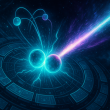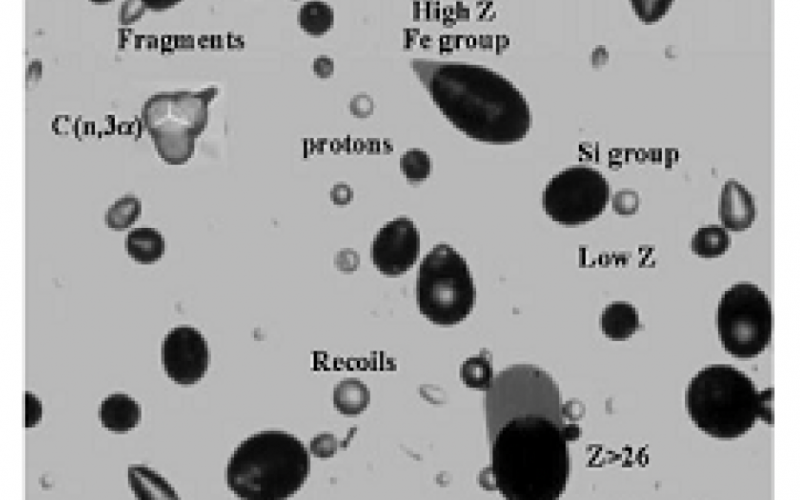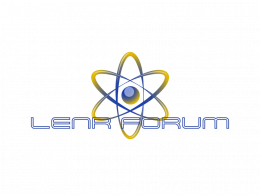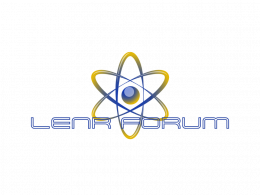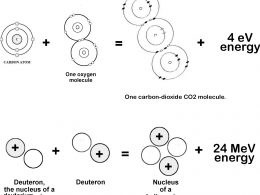Pamela Mosier-Boss and Lawrence Forsley, both with Global Energy Corp., have articulated repeatedly about the multiple reaction channels in LENR. One channel makes primarily heat and helium, while other reaction channels make primarily fast particles. Laboratory experiments can be designed to enhance one or the other type of reaction.
At ICCF25 Maurizio Maggiore, the European Commission Directorate General for Research and Innovation, gave a talk titled EU support of cold fusion research and other international projects. The presentation showed how he classifies some of the plethora of research styles, with a focus on European Union science.
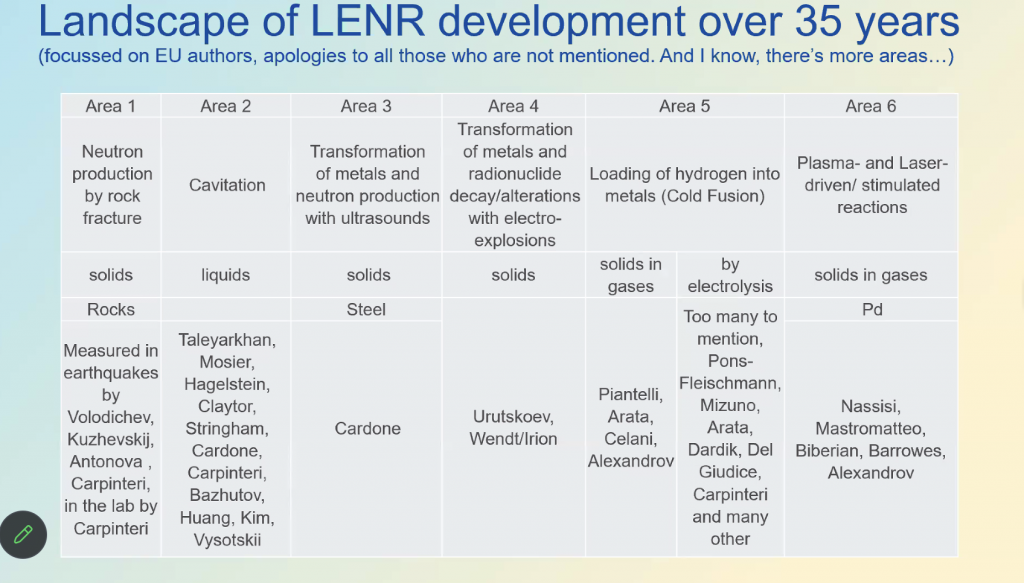
But another way to classify types of LENR is by reaction channel. Does the experiment make primarily heat? or does it make primarily particles? A survey of LENR cells show a spectrum of radiation, with no real line that delineates one channel from another. Going from little to no radiation in the heat-helium channel, to mostly particles and photons with little heat at the other end of the spectrum, each reaction-type blurs into the next. The Optimal Operating Points OOP’s of Mitchell Swartz also model this idea, further positing an ability to switch from one channel to another at will.
The new energy technologies being developed by Clean Planet and Brillouin Energy are based on the heat-helium channel and produce little to no radiation. Solid state designs that can reliably maximize thermal power output have been the holy grail for 35-years, visualized as a usable energy technology. Currently, nickel-copper nano-particles infused with hydrogen are making the big heat advancements. However, there are many configurations of hydrogen-metal cells, each type revealing different effects.
Co-deposition reveals short-cut to hot fusion
First pioneered by U.S. Navy research chemists Stan Szpak and Pamela Mosier-Boss, the co-deposition method of loading hydrogen into palladium has been utilized for three decades as a reproducible workhorse for LENR experimentation, revealing the presence of new nuclear effects.
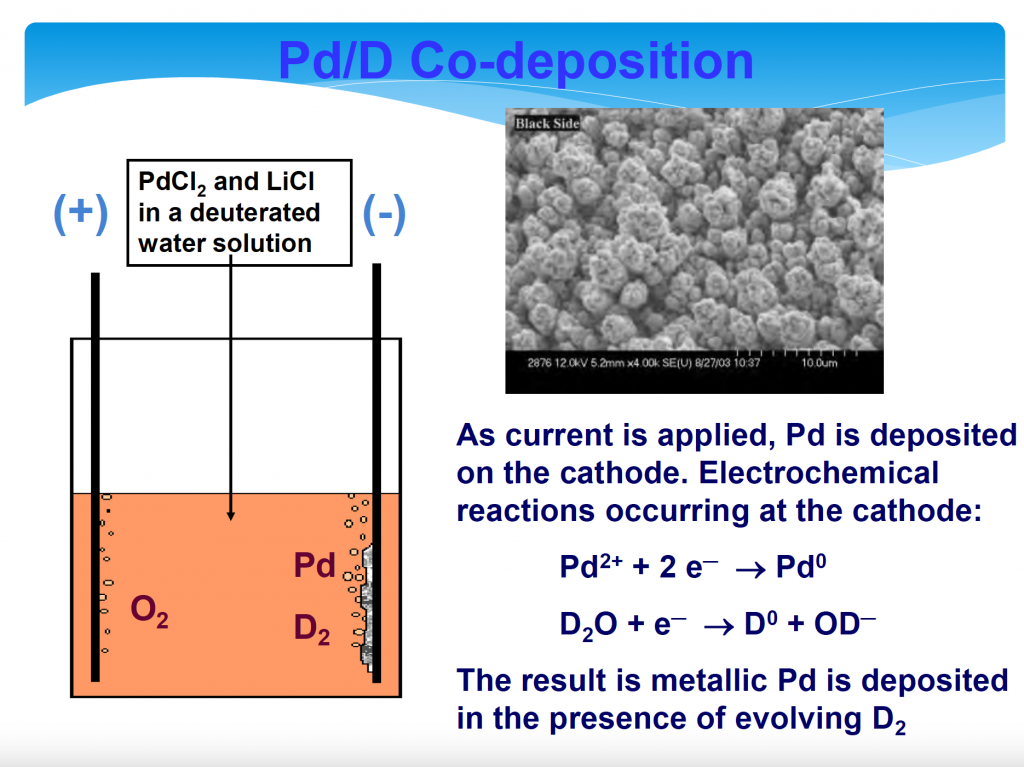
by Lawrence Forsley and Pam Boss 2012
When CR-39 particle detectors are placed near a co-deposition cell, tracks of tiny nuclear particles are recorded as they travel from where they were created in the cell, to the detector. The detector must be in close proximity to the active cathode as the particles created do not travel far.
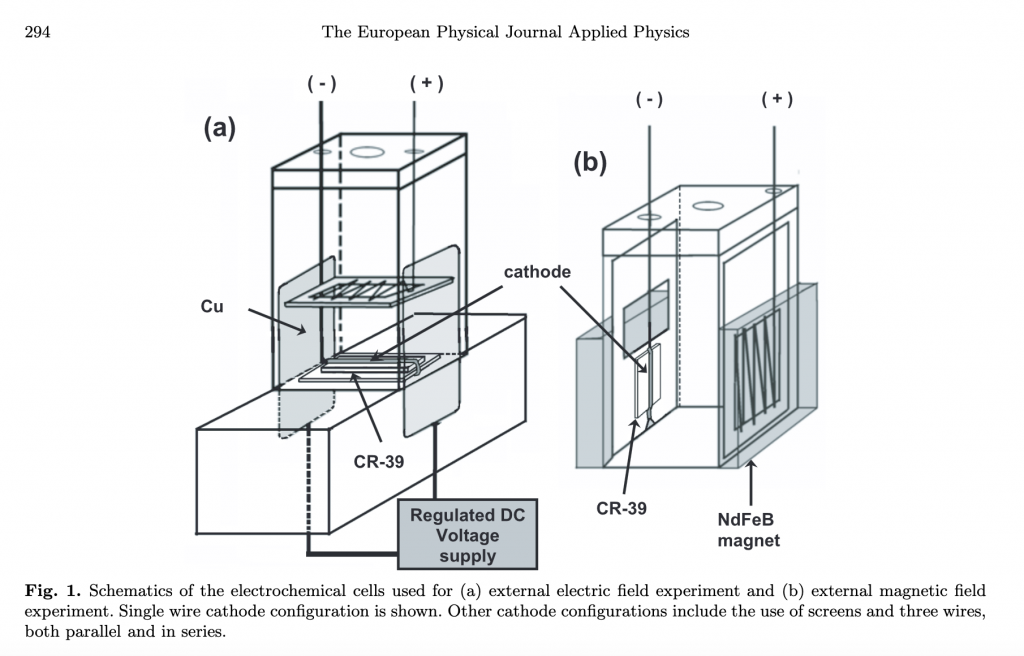
P.A. Mosier-Boss, S. Szpak, F.E. Gordon, and L.P.G. Forsley 2007
The type of CR-39 tracks co-deposition experiments generated are similar in characteristic to the tracks made by hot fusion experiments in particle accelerators. The co-deposition experiments using CR-39 detectors have revealed the creation of fast protons, tritons, neutrons, helium-3 and alpha particles.
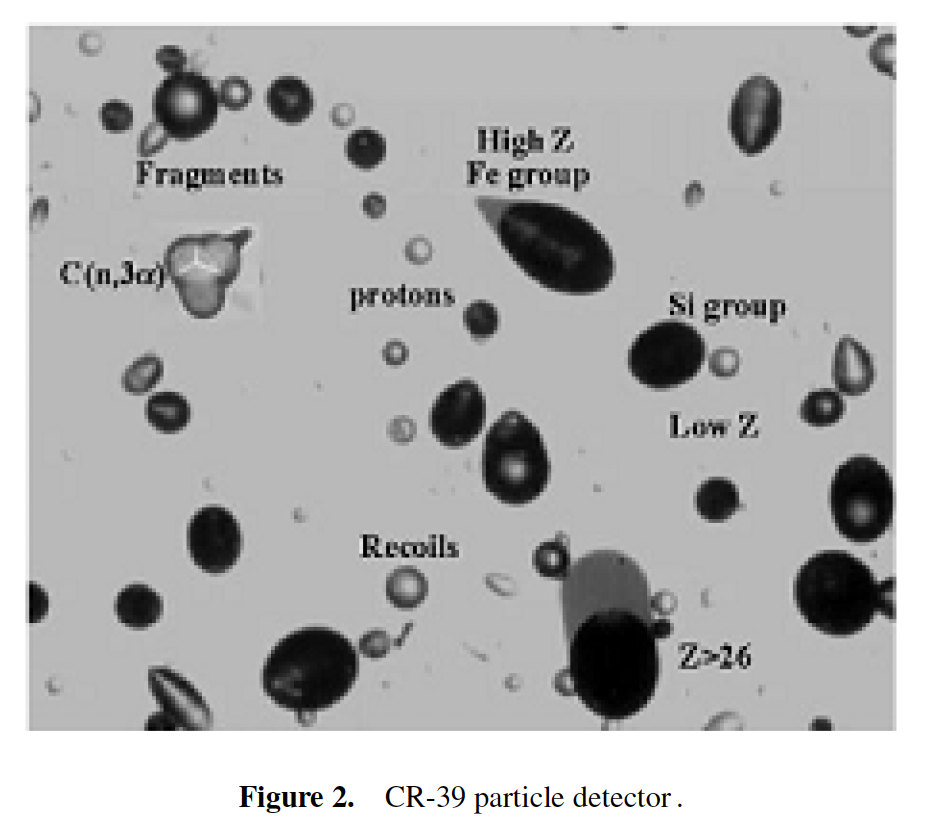
In hot fusion reactions, when a neutron impacts a carbon atom, it breaks into three separate alpha particles. This shows up during analysis as “triple tracks”. Co-deposition experiments using CR-39 show exactly the same triple track signature. It appears that neutrons generated by the co-depostion of palladium and hydrogen interact with carbon atoms in the plastic CR-39 detector, making triple tracks.
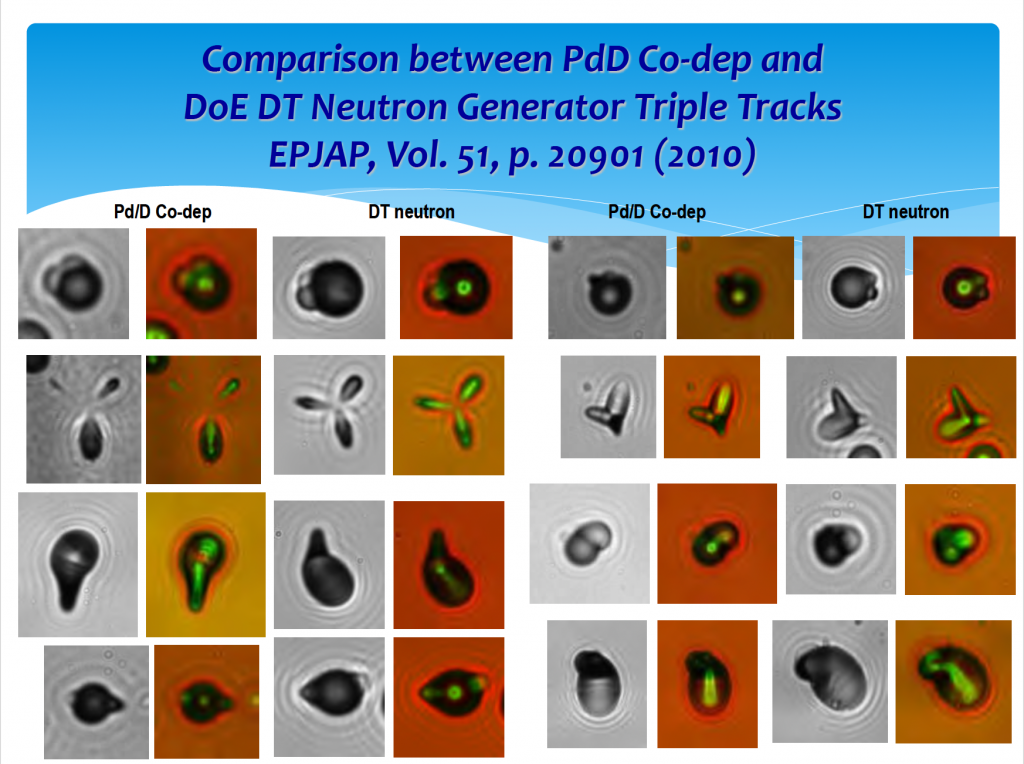
by Lawrence Forsley and Pam Boss 2012
The presence of triple tracks suggests that Deuterium-Tritium reactions that produce >=9.6 MeV neutrons are occurring inside the palladium lattice. That’s the level of energy needed to break up a carbon atom like that. As is the case with most solid state reactions, the number of neutrons generated does not correlate with the heat produced.
Working backwards like a detective, it is determined that the CR-39 signatures were likely produced by a suite of reactions listed below. Only the “Thermal, aneutronic channel, the “cold fusion” ” channel is the one that makes clean heat power.
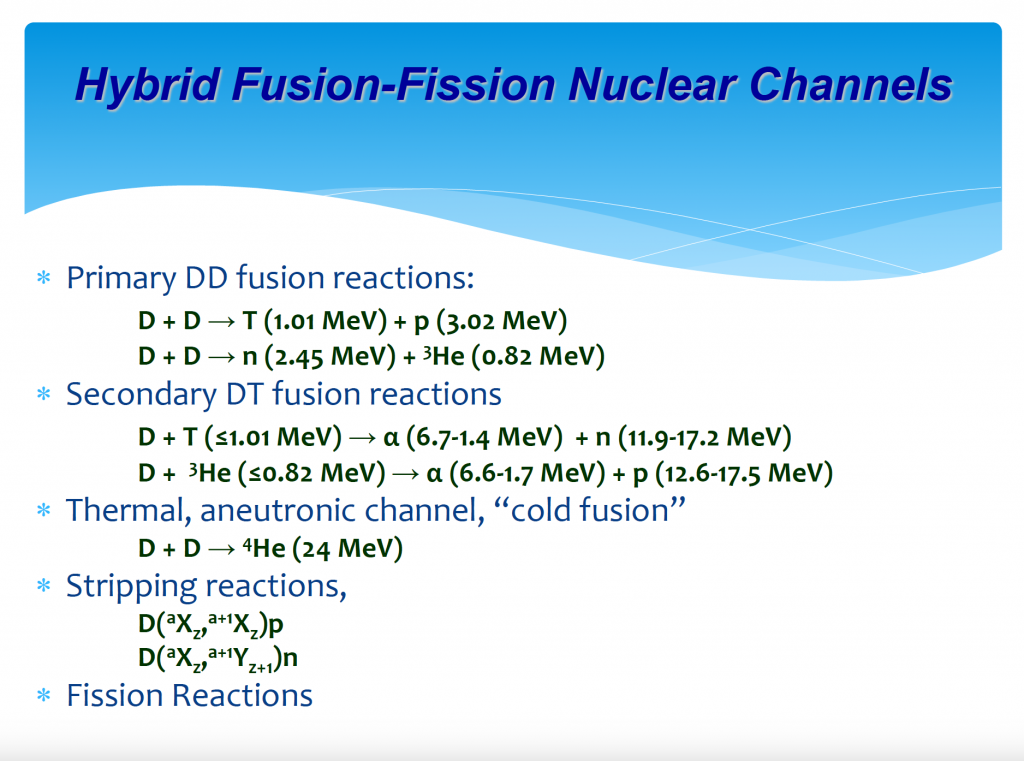
by Lawrence Forsley and Pam Boss 2012
While the other reactions are well-understood hot fusion equations, the thermal aneutronic channel is the unknown, for this channel does not occur often at all in hot fusion. The aneutronic channel is the real mystery of this discovery. Still, who knew that investigations into cold fusion would provide a “short-cut” to hot fusion? And a useful application, too.
Fusion-fission generator for space power
There are only two ways to provide long-term electrical power in space, by sunlight or nuclear power. Faraway from the Sun, the light is too weak to generate power, and nuclear power is required. The Voyager I and 2 probes are in interstellar space using nuclear power generated by the radioactive decay of plutonium-238. But plutonium is a highly-toxic material to life, and not a desirable fuel moving forward.
A new idea uses the neutrons generated by co-deposition directed at thorium atoms, which will fission the thorium, generating the heat needed to make electricity. Thorium does not naturally fission, and is considerably less-toxic than plutonium. There is no chain reaction with thorium. Stopping the co-deposition stops the neutrons, which stops the reaction. This design is a safer, less-toxic, and light-weight alternative to the fission reactor. It is referred to as the GeNIE (Green Nuclear Interstitial Energy) HybridTM.
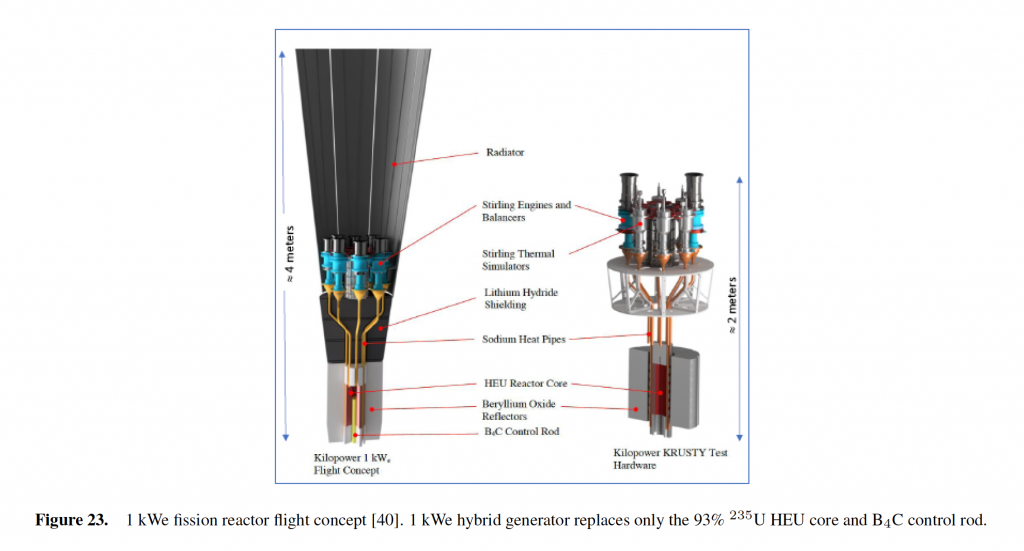
It is hoped that the GeNIE will be able to power ion-drive spacecraft for longterm missions to Mars and deep space.
Diversity is to our benefit
Classifying LENR reactions by whether or not they make nuclear products is subtle, because nuclear products occur in all the channels of LENR as a spectrum. On the one end, mostly heat is made with little to no particle radiation. However, sometimes in the heat channel, focused photon beams are measured, sometimes tritium or transmutations, occasional neutrons are measured. But so little radiation is made, most can not be measured outside the cell. The lack of radiation from the heat channel is what makes this an ideal power source.
But if you really want to make particles, you can configure to do that. At the other end of the spectrum, some experiments will make little heat, but mostly particles. Co-deposition, glow discharge, and low-energy particle beam experiments are examples of apparatus that can be configured to generate the particles and radiation that hot fusion normally generates. Even so, configuring a cell to make maximum particles and radiation will still generate a smaller amount than expected from the hot fusion reactions predict will occur with the commeasurate (small) amount of heat, that itself a mystery in this very experimental science.
Traditional fission and hot fusion reactions create many more fast neutrons, dangerous to life. The lack of particles and radiation detected from the original cold fusion cells, which primarily utilize the heat-helium channel, was one of the causes for dismissal of Fleischmann-Pons’ claims. Critics said, if cold fusion cells were really making fusion, then the amount of neutrons coming off would kill the graduate students working in the lab. Since the graduate students were still alive, there must be no neutrons, and no reaction.
In 1989, curious scientists around the world jumped in to reproduce the claims of fusion-sized power from a table-top cell using electrolyzed metal and water. A lack of instructions on how to reproduce the work exactly allowed imaginations to run wild, and all different ways to stuff hydrogen into metals were attempted. The variety of approaches produced a variety of effects. Tritium was found, helium was found, transmutations were found, and co-deposition showed a short-cut to hot fusion with the generation of nuclear particles.
Welcome plasma scientists!!!


